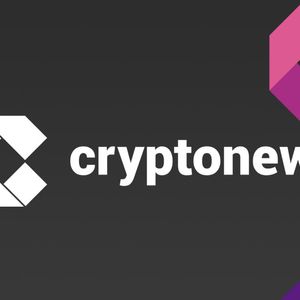Quantum Threats: Are Newer Blockchains Truly Prepared for the Future?
9 min read
BitcoinWorld Quantum Threats: Are Newer Blockchains Truly Prepared for the Future? The digital world is constantly evolving, and with it, the threats to our most valuable assets. For cryptocurrency enthusiasts, a looming challenge on the horizon is the advent of quantum computing. Imagine a machine so powerful it could potentially break the cryptographic foundations that secure your Bitcoin or Ethereum holdings. While still a future prospect, the industry is already grappling with how to fortify its defenses. A recent, groundbreaking study by Mysten Labs, the innovative developer behind the Sui blockchain, sheds critical light on this very issue, suggesting that some blockchains are inherently better positioned to withstand these impending quantum threats . Understanding the Quantum Threat to Blockchain Security Our modern digital security, including the integrity of blockchain networks, relies heavily on complex mathematical problems that are currently impossible for even the most powerful traditional computers to solve within a reasonable timeframe. This is the bedrock of public-key cryptography, where you have a public key (like a blockchain address) and a private key (your secret password). The security comes from the computational difficulty of deriving the private key from the public one. Enter quantum computers. These aren’t just faster versions of current computers; they operate on fundamentally different principles, leveraging quantum mechanics to solve certain types of problems exponentially faster. The primary concern for blockchain security stems from a specific algorithm: Shor’s Algorithm . Developed by Peter Shor, this classical method, when run on a sufficiently powerful quantum computer, can efficiently factor large integers. Why is this problematic for crypto? Because many of the cryptographic algorithms used today, including the Elliptic Curve Digital Signature Algorithm (ECDSA) prevalent in older blockchains, rely on the difficulty of precisely these mathematical problems. If Shor’s Algorithm can quickly factor the numbers underpinning your public key, it could potentially allow an attacker to derive your private key from publicly available blockchain data, effectively compromising your funds. While practical quantum computers capable of this scale are still years away, the potential impact is so profound that proactive preparation is not just prudent, but essential. Older vs. Newer Blockchains: The ECDSA and EdDSA Divide The heart of the quantum vulnerability discussion lies in the digital signature algorithms employed by different blockchain networks. Digital signatures are crucial for verifying transactions and ensuring their authenticity on a blockchain. Elliptic Curve Digital Signature Algorithm (ECDSA) : This algorithm has been the workhorse for many pioneering blockchains. Bitcoin, launched in 2009, and Ethereum, introduced in 2015, both rely on ECDSA for securing transactions. It’s a robust and efficient algorithm for classical computing, providing strong security guarantees. However, its mathematical underpinnings, based on elliptic curve discrete logarithm problems, are precisely what Shor’s Algorithm targets. This means that for blockchains heavily reliant on ECDSA, transitioning to quantum-resistant security presents significant technical and operational hurdles. Imagine changing the fundamental lock on a global vault while billions of dollars are constantly moving in and out – it’s a monumental task. Edwards-curve Digital Signature Algorithm (EdDSA) : In contrast, newer blockchains have had the advantage of learning from their predecessors and incorporating more modern cryptographic primitives. EdDSA is a more recent digital signature scheme that offers several advantages over ECDSA, including simpler implementation, better performance, and often, enhanced security properties against certain types of attacks even in a classical computing context. Crucially, as highlighted by Mysten Labs, these characteristics also make them potentially better positioned for a smoother transition to post-quantum cryptography (PQC) standards. Networks like Sui, Solana, and Near are examples of blockchains that have adopted EdDSA, giving them a potential edge in the race against quantum threats . Here’s a simplified comparison: Feature ECDSA (Older Blockchains) EdDSA (Newer Blockchains) Algorithm Basis Elliptic Curve Discrete Logarithm Problem Edwards Curve Cryptography Quantum Vulnerability (Shor’s) Directly targeted; steeper transition hurdles Also vulnerable, but easier to adapt to PQC Implementation Complexity More complex, higher risk of side-channel attacks Simpler, more resistant to common attacks Performance Good, but can be less efficient than EdDSA Generally faster and more efficient Examples Bitcoin, Ethereum Sui, Solana, Near Why Mysten Labs’ Study Offers a Glimmer of Hope The findings from Mysten Labs, a prominent research and development company in the blockchain space, are not meant to induce panic but rather to provide a clear-eyed assessment and a path forward. Their study underscores that blockchains utilizing EdDSA are indeed “better positioned” to manage future quantum threats . This isn’t because EdDSA is inherently “quantum-proof” – no currently deployed public-key cryptographic algorithm is – but rather because its design facilitates a more straightforward migration to quantum-resistant algorithms. Kostas Chalkias, co-founder and Chief Cryptographer at Mysten Labs, articulated this challenge by noting the “steeper technical and operational hurdles” faced by older networks like Bitcoin and Ethereum. Upgrading a foundational cryptographic primitive in a network as vast and decentralized as Bitcoin or Ethereum would require immense coordination, potentially involving contentious hard forks, and could introduce new vectors for bugs or vulnerabilities. For newer chains, which often have more modular designs and have benefited from later cryptographic research, the path to integrating post-quantum cryptographic (PQC) standards is comparatively less arduous. This proactive research and disclosure from entities like Mysten Labs are crucial for the long-term health and security of the entire blockchain ecosystem as it navigates the complex landscape of quantum threats . The Urgent Need for Quantum-Resistant Cryptography The urgency surrounding quantum threats isn’t just theoretical; it’s driven by real-world timelines and the increasing integration of blockchain technology into critical financial infrastructure. Governments and national security agencies worldwide are already making concrete plans to transition away from classical cryptographic algorithms like ECDSA and Rivest–Shamir–Adleman (RSA) within the next decade. Kostas Chalkias specifically warned that these classical algorithms are slated for phase-out by 2030 or 2035. This impending deadline is particularly significant for networks that are anticipated to handle, or already handle, high-value, sensitive assets. Imagine the implications for: Sovereign Assets: National reserves or digital forms of national currencies. National Treasuries: Government-held funds or bonds tokenized on a blockchain. Exchange-Traded Funds (ETFs): Especially those tracking cryptocurrencies, which are now becoming mainstream investment vehicles. Central Bank Digital Currencies (CBDCs): Digital versions of fiat currency issued by central banks, which demand the highest levels of security and trust. For these critical applications, the expectation will soon shift towards mandatory implementation of post-quantum cryptographic standards. Failure to adopt these standards could severely erode long-term trust, hinder widespread adoption, and potentially expose national or institutional assets to unprecedented risks from quantum attacks. The foresight to address these quantum threats now is paramount for any blockchain aspiring to play a significant role in the global financial future. Navigating the Transition: Challenges and Opportunities The journey to a quantum-resistant blockchain ecosystem is fraught with both significant challenges and exciting opportunities. Challenges for Older Blockchains: Massive Coordination: Upgrading core cryptographic algorithms in decentralized networks like Bitcoin or Ethereum requires agreement from thousands of nodes, miners, and developers globally. This often necessitates “hard forks,” which can be contentious and lead to network splits. Legacy Codebase: These networks have years of accumulated code, making fundamental changes complex and prone to unforeseen issues. User Migration: Users would need to update their wallets and potentially generate new, quantum-resistant addresses, a massive undertaking with significant user education requirements. Performance Overhead: Many current post-quantum cryptographic algorithms are larger and slower than their classical counterparts, potentially impacting transaction throughput and network efficiency. Opportunities for Newer Blockchains: Built-in Agility: Many newer chains are designed with modularity in mind, making it easier to swap out cryptographic primitives without requiring a complete overhaul. Attracting Innovation: Projects and developers seeking to build on future-proof infrastructure may gravitate towards chains already considering quantum threats resistance. First-Mover Advantage: Being among the first to successfully implement robust post-quantum solutions could solidify their position as leaders in secure blockchain technology. The field of post-quantum cryptography (PQC) is actively researching and standardizing new algorithms that can withstand quantum attacks. NIST (National Institute of Standards and Technology) in the U.S. is leading efforts to select and standardize such algorithms. The blockchain industry will likely adopt these standards as they mature, but the ease of integration will vary significantly between networks. What Does This Mean for You, the Crypto Enthusiast? While the discussion around quantum threats can sound intimidating, it’s important to put it into perspective. Quantum computers capable of breaking current blockchain encryption are not yet widely available, nor are they expected to be for several years. This gives the blockchain community a crucial window to prepare and adapt. For you, the individual crypto holder, here are a few actionable insights: Stay Informed: Continue to follow developments in quantum computing and post-quantum cryptography. Understanding the technology behind the chains you invest in is key. Diversify (Strategically): While not an immediate concern, being aware of which chains are proactively addressing quantum readiness can be a factor in long-term investment decisions. Trust in Progress: The blockchain community is highly innovative and proactive. The fact that studies like Mysten Labs’ are being conducted and discussed openly shows a commitment to addressing future challenges head-on. The debate between older and newer blockchains isn’t about one being “bad” and the other “good,” but rather about different stages of technological evolution and adaptability to emerging threats. The entire industry is on a path towards greater security and resilience, ensuring that your digital assets remain safe for decades to come. The advent of quantum computing poses a significant, albeit future, challenge to the cryptographic foundations of blockchain technology. Mysten Labs’ study highlights a critical distinction: newer blockchains employing EdDSA are indeed better prepared for the transition to quantum-resistant security compared to older networks relying on ECDSA. While Bitcoin and Ethereum face steeper hurdles, the entire industry is actively researching and developing solutions. Proactive preparation, driven by insights from leading labs and the looming government deadlines, is paramount to ensuring the long-term trust, security, and widespread adoption of blockchain technology in a quantum-powered future. Frequently Asked Questions (FAQs) 1. What is a quantum threat to blockchain? A quantum threat refers to the potential for quantum computers, using algorithms like Shor’s, to break the cryptographic security of current blockchains by efficiently deriving private keys from public keys. 2. Why are newer blockchains like Sui, Solana, and Near better prepared? These newer blockchains often use the Edwards-curve Digital Signature Algorithm (EdDSA), which, while not quantum-proof, is considered easier to transition to post-quantum cryptographic standards compared to the Elliptic Curve Digital Signature Algorithm (ECDSA) used by older chains. 3. What is the difference between ECDSA and EdDSA? ECDSA (Elliptic Curve Digital Signature Algorithm) is an older, widely used digital signature scheme (e.g., Bitcoin, Ethereum) that is directly vulnerable to Shor’s Algorithm. EdDSA (Edwards-curve Digital Signature Algorithm) is a newer, more efficient scheme used by chains like Sui and Solana, which offers a smoother path to quantum resistance. 4. When are quantum computers expected to pose a real threat? While specific timelines vary, powerful quantum computers capable of breaking current blockchain encryption are generally expected to be several years away, likely by 2030-2035, aligning with government phase-out plans for classical algorithms. 5. What are “post-quantum cryptographic standards”? Post-quantum cryptographic (PQC) standards are new cryptographic algorithms designed to be resistant to attacks from future quantum computers. Organizations like NIST are actively working to standardize these new algorithms. 6. Should I be worried about my existing Bitcoin or Ethereum holdings? Not immediately. The threat is not imminent, and the blockchain community is actively working on solutions. However, it highlights the importance of staying informed about potential future upgrades and security measures for these networks. Did this article help you understand the evolving landscape of blockchain security against quantum threats? Share your thoughts and this article with your network on social media to spread awareness about this crucial topic! To learn more about the latest crypto security trends, explore our article on key developments shaping blockchain technology ‘s future security . This post Quantum Threats: Are Newer Blockchains Truly Prepared for the Future? first appeared on BitcoinWorld and is written by Editorial Team

Source: Bitcoin World



